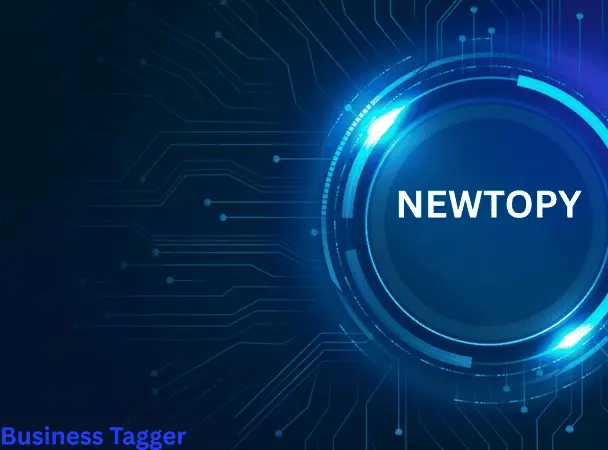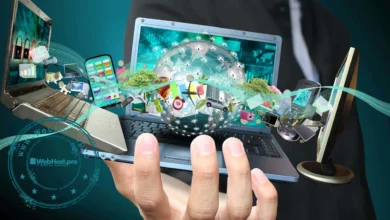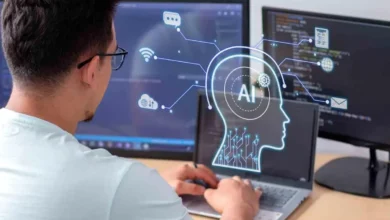The Newtopy Horizon: Where Technology Meets Human Harmony

In a world where technology evolves faster than we can blink, a new term has emerged that’s sparking curiosity and excitement: newtopy. It’s not just another buzzword to toss around in tech circles. It’s a concept that promises to redefine how we interact with digital ecosystems. Imagine a space where connectivity, user empowerment, and innovation converge to create something truly transformative. That’s newtopy a vision of a digital future that’s seamless, intuitive, and inclusive. In this article, we’ll dive into what newtopy means, why it matters, and how it’s poised to shape the way we live, work, and connect.
Table of contents
What Is Newtopy?
At its core, newtopy is about creating a digital ecosystem that feels alive, adaptive, and deeply interconnected. The term blends “new” with “utopia,” suggesting a forward-thinking, idealized vision of technology that prioritizes harmony between users, platforms, and data. Unlike traditional digital frameworks that often feel fragmented—think clunky apps, walled-off platforms, or disjointed user experiences—newtopy envisions a world where everything works together effortlessly. It’s like the difference between a chaotic city with bad traffic and a well-planned metropolis where everything flows.
Newtopy isn’t tied to a single technology or platform. Instead, it’s a philosophy that emphasizes interoperability, user-centric design, and the breaking down of silos. Picture a scenario where your smart home devices, social media accounts, work tools, and even your fitness tracker all communicate seamlessly, anticipating your needs without you having to micromanage them. That’s the kind of world newtopy aims to create. It’s about making technology feel less like a tool you wrestle with and more like an extension of yourself.
The Roots of Newtopy
The idea of newtopy didn’t just appear out of nowhere. It’s a response to the growing pains of our current digital landscape. As we’ve piled on more apps, devices, and platforms, we’ve also created a mess of disconnected systems. Your phone might not talk to your laptop, your smartwatch might not sync with your calendar, and don’t even get me started on the headache of managing multiple logins. Newtopy emerges from the need to solve these problems, drawing inspiration from earlier tech movements like the Internet of Things (IoT) and Web 3.0, but with a broader, more human-focused scope.
Think of it as the next logical step in the evolution of digital ecosystems. Where IoT focused on connecting devices and Web 3.0 emphasized decentralization and user ownership, newtopy pulls these threads together into a cohesive vision. It’s not just about connecting things—it’s about connecting them in a way that feels natural and empowering for users. This philosophy is gaining traction among tech innovators who see the current state of digital fragmentation as a problem ripe for solving.
Why Newtopy Matters
You might be wondering: why should I care about newtopy? The answer lies in how it addresses some of the biggest frustrations we face in our tech-driven lives. We’ve all experienced the annoyance of apps that don’t work together, data that’s locked behind proprietary walls, or interfaces that feel like they were designed by someone who’s never used them. Newtopy promises to tackle these issues head-on, creating a digital world that’s more intuitive and less stressful.
One of the biggest reasons newtopy matters is its focus on user empowerment. In today’s digital landscape, users often feel like they’re at the mercy of big tech companies. Your data is scattered across platforms, and you’re constantly navigating terms of service that seem designed to confuse. Newtopy flips this dynamic by prioritizing user control. Imagine having a single, secure hub where you can manage your digital identity, control what data you share, and seamlessly interact with any platform or device. That’s the kind of empowerment newtopy aims to deliver.
Bridging the Gap Between Platforms
Another reason newtopy is gaining attention is its potential to bridge the gap between platforms. Right now, the digital world is like a collection of walled gardens. Apple’s ecosystem doesn’t play nicely with Google’s, and your favorite social media app probably doesn’t integrate with your work tools. Newtopy seeks to tear down these walls, creating a universal framework where platforms can communicate and share data in a way that benefits users, not just corporations.
This interoperability isn’t just a pipe dream—it’s already starting to take shape. Developers are experimenting with protocols that allow different systems to “talk” to each other, much like how email works across different providers. For example, imagine a world where your fitness app can pull data from your smart fridge to suggest meal plans based on what’s in stock, all while syncing with your calendar to remind you when to eat. This kind of seamless integration is at the heart of newtopy, and it’s why tech enthusiasts are so excited about its potential.
The Building Blocks of Newtopy
So, what does it take to make newtopy a reality? It’s not just about wishful thinking or slapping a new label on existing tech. Newtopy relies on several key components that work together to create a cohesive digital ecosystem. These building blocks are already in development, and they’re paving the way for a future that feels straight out of science fiction.
Interoperability and Open Standards
The first building block is interoperability, which we touched on earlier. For newtopy to work, platforms and devices need to speak a common language. This means adopting open standards that allow different systems to communicate without proprietary roadblocks. Think of it like a universal translator for technology. Organizations like the World Wide Web Consortium (W3C) are already working on standards that could make this a reality, ensuring that data flows freely and securely across platforms.
Interoperability also means breaking down the monopolistic tendencies of big tech. Instead of forcing users to stay within one ecosystem, newtopy encourages a world where you can mix and match tools without losing functionality. For businesses, this could mean lower barriers to entry and more opportunities to innovate. For users, it means more choice and flexibility in how you interact with technology.
User-Centric Design
Another critical component is user-centric design. Newtopy isn’t just about making tech work better—it’s about making it work better for people. This means designing interfaces that are intuitive, accessible, and inclusive. It also means giving users more control over their data and privacy. In a newtopy-driven world, you’d be able to decide exactly who gets access to your information and for what purpose, without wading through pages of fine print.
This focus on user experience is already influencing how companies approach product development. For example, some startups are creating dashboards that let users manage all their connected devices and accounts in one place. These tools prioritize simplicity and transparency, aligning with the newtopy vision of a digital world that works for you, not against you.
Artificial Intelligence and Automation
Artificial intelligence (AI) is another cornerstone of newtopy. By leveraging AI, digital ecosystems can become smarter and more adaptive, anticipating user needs and streamlining interactions. For instance, AI could analyze your daily routine and automatically adjust your smart home settings, suggest tasks to prioritize, or even recommend content based on your mood. This kind of proactive intelligence is what makes newtopy feel alive and responsive.
AI also plays a role in ensuring security and trust. With so much data flowing between platforms, newtopy relies on advanced algorithms to detect threats and protect user privacy. This is where innovations like blockchain and decentralized identity systems come into play, offering secure ways to manage and verify data without relying on a single authority.
The Impact of Newtopy on Businesses
For businesses, newtopy represents both an opportunity and a challenge. On one hand, it opens up new possibilities for innovation and collaboration. Companies that embrace open standards and user-centric design can differentiate themselves in a crowded market, building loyalty among customers who value flexibility and transparency. For example, a business that integrates seamlessly with other platforms—say, a project management tool that syncs effortlessly with your email, calendar, and cloud storage—could gain a competitive edge.
On the other hand, newtopy challenges businesses to rethink their approach to data and customer relationships. In a world where users have more control, companies can no longer rely on locking customers into proprietary ecosystems. Instead, they’ll need to compete on value, offering services that are so compelling that users choose them willingly. This shift could level the playing field, giving smaller players a chance to compete with tech giants.
For a deeper dive into how businesses can adapt to emerging tech trends, check out this article on navigating the metaverse for business growth. It explores how companies are leveraging new technologies to stay ahead, offering insights that align with the principles of newtopy.
The Future of Newtopy
Looking ahead, newtopy has the potential to reshape our digital lives in profound ways. As more companies and developers adopt its principles, we could see a world where technology feels less like a collection of tools and more like a cohesive, intuitive ecosystem. This could lead to breakthroughs in everything from healthcare—where patient data could flow seamlessly between providers—to education, where personalized learning platforms adapt to each student’s needs.
Of course, realizing this vision won’t be easy. There are technical challenges, like developing universal standards and ensuring security at scale. There are also cultural hurdles, as companies and users alike will need to embrace a more open, collaborative mindset. But the potential rewards—greater efficiency, better user experiences, and a more equitable digital landscape—are worth the effort.
Overcoming Obstacles
One of the biggest obstacles to newtopy is resistance from established tech giants. Companies that have built their empires on proprietary systems may be reluctant to adopt open standards, fearing a loss of control or revenue. Convincing these players to embrace newtopy will require a combination of market pressure, consumer demand, and regulatory support. Governments and advocacy groups could play a key role here, pushing for policies that promote interoperability and user rights.
Another challenge is ensuring that newtopy remains inclusive. As exciting as this vision is, there’s a risk that it could widen the digital divide if not implemented thoughtfully. Developers will need to prioritize accessibility, ensuring that newtopy benefits everyone, not just those with the latest gadgets or fastest internet connections.
Conclusion
Newtopy isn’t just a concept—it’s a glimpse into a future where technology works for us, not the other way around. By prioritizing interoperability, user empowerment, and intelligent design, newtopy promises to create digital ecosystems that are seamless, intuitive, and inclusive. While there are challenges to overcome, the potential for a more connected and user-friendly digital world is within reach. As we move toward this future, businesses, developers, and users alike have a role to play in shaping newtopy into a reality that benefits everyone.
FAQs
What exactly does newtopy mean?
Newtopy is a term that describes a vision for a digital ecosystem where platforms, devices, and data work together seamlessly. It emphasizes interoperability, user-centric design, and empowerment, aiming to create a more cohesive and intuitive digital experience.
How is newtopy different from existing tech trends like Web 3.0?
While Web 3.0 focuses on decentralization and user ownership, newtopy takes a broader approach, combining elements of Web 3.0, IoT, and other trends into a unified philosophy. It’s less about specific technologies and more about creating a harmonious, user-focused digital ecosystem.
Can newtopy improve my daily tech experience?
Absolutely. Newtopy aims to make technology more intuitive by ensuring that devices and platforms work together seamlessly. This could mean fewer compatibility issues, simpler interfaces, and more control over your data, making your daily interactions with tech smoother and less frustrating.
Is newtopy something businesses should care about?
Yes, businesses should pay attention to newtopy. It offers opportunities to innovate by creating interoperable, user-friendly products. It also challenges companies to rethink proprietary models and focus on delivering real value to customers.
How close are we to achieving newtopy?
We’re still in the early stages, but pieces of newtopy are already falling into place. Developments in open standards, AI, and user-centric design are laying the groundwork. However, widespread adoption will require collaboration across industries and a shift in how we think about technology.
What role does AI play in newtopy?
AI is a key component of newtopy, enabling smarter, more adaptive digital ecosystems. It can anticipate user needs, streamline interactions, and enhance security, making the digital world feel more intuitive and responsive.





